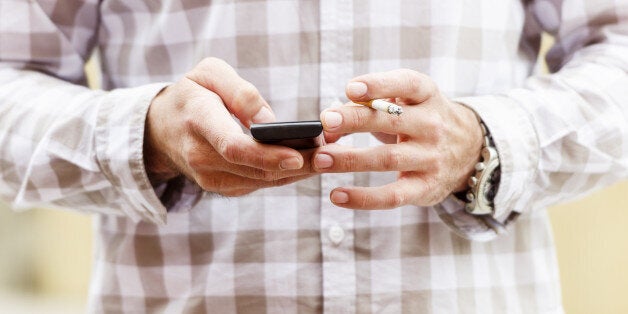
If, like most modern ladies and gentlemen, you are constantly switching from Whatsapp to Facebook, Instagram to Twitter, Angry Birds to Candy Crush, you may want to rethink your app surfing.
Because, according to a recent study, gadget multi-tasking can alter the brain structure of people juggling with smartphones and laptops.
Regularly using several devices at the same time reduces nerve cell density in a particular part of the brain, scientists found.
There could be a link with previous work associating high levels of media multi-tasking with distractibility, depression and anxiety.
Neuroscientist Kepkee Loh, from University College London, said: "Media multi-tasking is becoming more prevalent in our lives today and there is increasing concern about its impacts on our cognition and social-emotional well-being.
"Our study was the first to reveal links between media multi-tasking and brain structure."
The research was carried out at the University of Sussex's Sackler Centre for Consciousness.
A group of 75 volunteers underwent functional magnetic resonance imaging (fMRI) brain scans after being questioned about their use of media devices, including mobile phones, computers, TVs and printers.
Those who reported multi-tasking with larger numbers of devices had less dense "grey matter" - nerve cell bodies - in a brain region called the anterior cingulate cortex (ACC).
The ACC is involved in emotional regulation and a range of mental functions, including decision making.
The research, published in the online journal Public Library of Science ONE, provides more evidence that brain wiring can be altered by exposure to new environments and experiences.
Scientists now know that far from being fixed in childhood, the brain remains highly "plastic" throughout life.
Neural pathways and connections can change under the influence of behaviour, emotions and the environment, or as a result of injury.
Other studies have shown that specific training, such as learning to juggle or acquiring a London cabbie's "knowledge" of city roads, can increase grey matter density in the brain.
"The exact mechanisms of these changes are still unclear," said Mr Loh. "Although it is conceivable that individuals with small ACC are more susceptible to multi-tasking situations due to weaker ability in cognitive control or socio-emotional regulation, it is equally plausible that higher levels of exposure to multi-tasking situations leads to structural changes in the ACC."